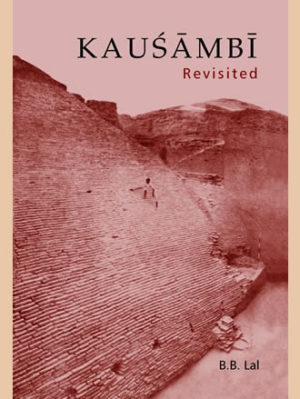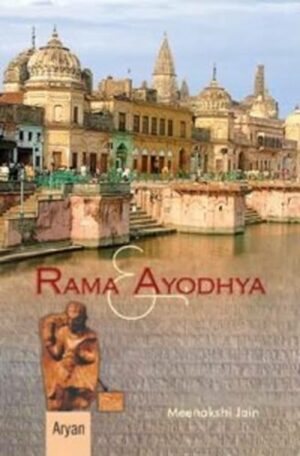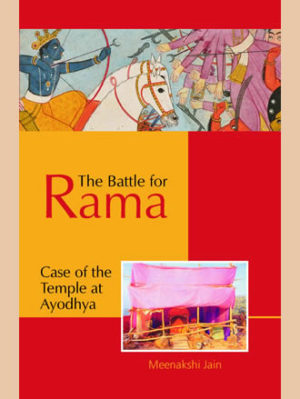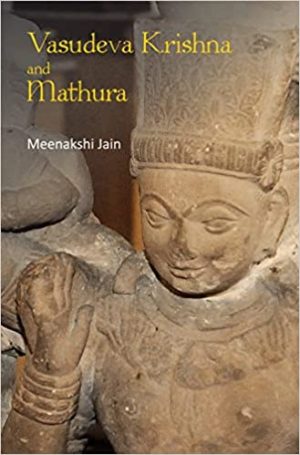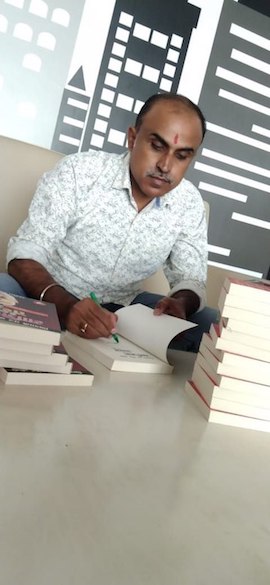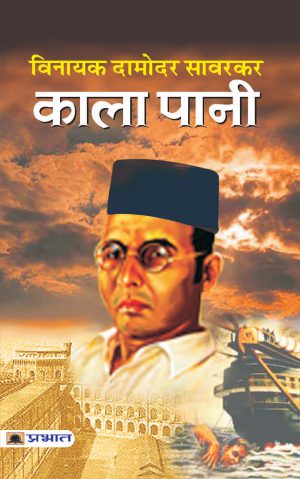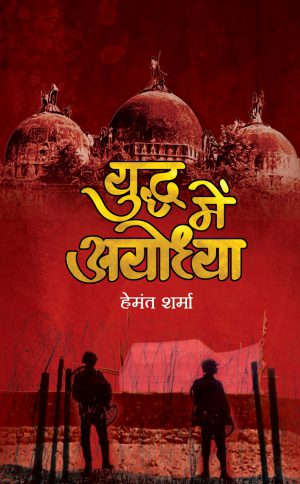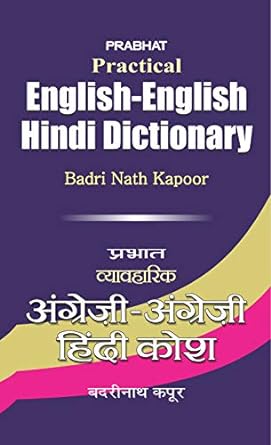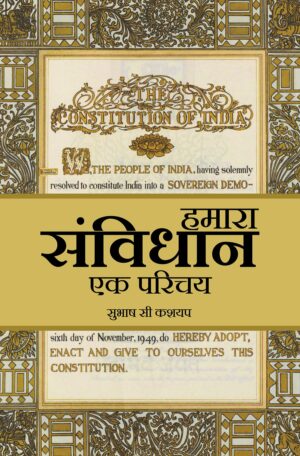Aryan Books International
Showing all 7 results
-
Aryan Books International, English Books, Suggested Books, अध्यात्म की अन्य पुस्तकें, इतिहास
Flight of Deities and Rebirth of Temples – Episodes from Indian History
-10%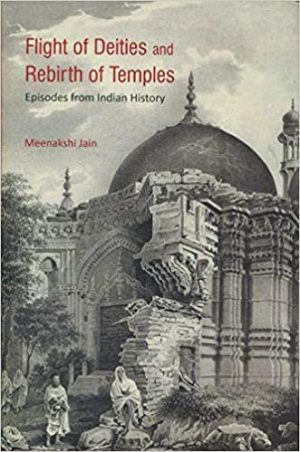 Aryan Books International, English Books, Suggested Books, अध्यात्म की अन्य पुस्तकें, इतिहास
Aryan Books International, English Books, Suggested Books, अध्यात्म की अन्य पुस्तकें, इतिहासFlight of Deities and Rebirth of Temples – Episodes from Indian History
This work examines the medieval response to temple destruction and image desecration. While temples were destroyed on a considerable scale, also noteworthy were the repeated endeavours to reconstruct them. In each instance of rebirth, the temple retained its original name, even though there was a visible downsizing in its scale and grandeur. The Keshava temple at Mathura, the Vishwanath temple at Kashi, the Somnath temple in Saurashtra, the Rama mandir at Ayodhya were among the shrines continually restored, well after Hindus had lost all semblance of political power. The Bindu Madhava, the most important Vishnu temple in Varanasi, was demolished in 1669 and a mosque constructed in its place. The temple now bearing the name Bindu Madhava is a modest structure in the shadow of the mosque, but continues the traditions associated with the site. Intriguingly, mosques built on temple sites often retained the sacred names – Bijamandal mosque, Lat masjid, Atala masjid, Gyanvapi mosque, and not to forget, masjid-i- janamsthan.
Equally worthy of study was the fate of images enshrined in temples. Many were swiftly removed by anxious devotees, many more were hurriedly buried; some remained on the move for decades, till such time they could be escorted back to their abodes. In several cases, images were damaged in flight. Countless images were lost, as their places of burial were forgotten over time. That necessitated the consecration of new images in more peaceable circumstances. So there were temples of the tenth-eleventh centuries, which housed images instated in the sixteenth. In situations where neither temple nor image could be safeguarded, the memory endured, and a shrine was recreated after an interval of several centuries.
SKU: n/a -
Aryan Books International, ऐतिहासिक नगर, सभ्यता और संस्कृति
KAUSAMBI REVISITED
Located on the left bank of the Yamuna, at a distance of about 50 kilometres south-west of Allahabad, Kausambi is decidedly one of the most important sites of early historical India. Excavations carried out over here by the late Professor G.R. Sharma and his colleagues have brought to light many noteworthy structures and antiquities. However, some of the structures have wrongly been adjudged. For example, a fallen mass of bricks has been identified as a syena-chiti (eagle-shaped altar for sacrifice), or a medieval large-sized structure as the palace of the renowned king Udayana who in fact ruled around 500 BCE. This booklet seeks to set right these misinterpretations, giving cogent reasons in each case. This has been done not to malign anybody but to make the truth reveal itself. Satyameva jayate.
SKU: n/a -
Aryan Books International, English Books, इतिहास
RAMA AND AYODHYA
This work briefly examines the antiquity of the Rama Katha and spread of the Rama cult over the Indian subcontinent in the context of claims of Left academics on its late popularity. Its main focus is the conflict at Ayodhya over the Ramjanmabhumi temple allegedly destroyed by the Mughal Emperor, Babar, in 1528. It examines the accounts of foreign travellers in the seventeenth and eighteenth centuries, and British administrator-scholars in the nineteenth and early twentieth centuries, which testify to Ayodhya?s continuing importance as a pilgrimage centre associated with Rama?s birthplace. The extended litigation over the Ramjanmabhumi/Babri Masjid in colonial times further attests to the persistence of the claims to the Janmabhumi. From the late 1980s, Left historians have been in the forefront of the campaign against the Rama temple. They have argued that Rama worship was an eighteenth-nineteenth century phenomenon and the present-day Ayodhya acquired its standing and identity only in the fifth century AD, during the rule of the imperial Guptas. According to Left academics, the identification of the Ramjanmabhumi in Ayodhya was ?a matter of faith, not of historical evidence?. They also rejected any possibility of the Babri Masjid being built on the site of the Janmabhumi temple. Excavations by the Archaeological Survey of India (ASI) proved the inaccuracy of these assertions. And finally, the judgement of the Allahabad High Court (Lucknow Bench) marked a decisive moment in the dispute over the Janmabhumi. The writings of Left academics, the findings of the ASI, the extended arguments in the Allahabad High Court and its eventual verdict form the subject of this study.
SKU: n/a -
Aryan Books International, ऐतिहासिक नगर, सभ्यता और संस्कृति
SARASWATI BAH RAHI HAI : सरस्वती बह रही है
-10%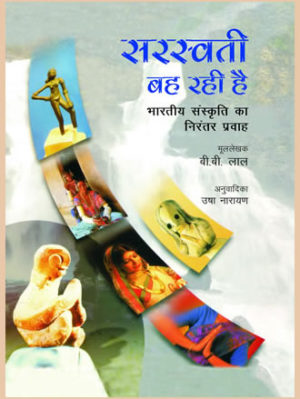 Aryan Books International, ऐतिहासिक नगर, सभ्यता और संस्कृति
Aryan Books International, ऐतिहासिक नगर, सभ्यता और संस्कृतिSARASWATI BAH RAHI HAI : सरस्वती बह रही है
सरस्वती बह रही है: भारतीय संस्कृति का निरंतर प्रवाह
यह पुस्तक प्राचीन भारत की दो प्रमुख परस्पर विरोधी मान्यताओं पर विचार करती है।
प्रथम-कुछ भारतीय और अधिकांश पाश्चात्य विद्वानों की मान्यता है कि ऋग्वैदिक सरस्वती नदी अफ़ग़ानिस्तान की हेलमण्ड नदी है। लेखक ने ऋग्वेद के पूरे साक्ष्यों का विश्लेषण किया और यह दिखाने का प्रयास किया है कि पूर्वोक्त मान्यता सर्वथा निराधार है। ये मान्यताएँ ऋग्वैदिक साक्ष्यों के विपरीत जाती हैं। दूसरी ओर ऋग्वेद की ही भौगोलिक सामग्रियाँ स्पष्ट करती हैं कि ऋग्वैदिक सरस्वती और दूसरी कोई नहीं, आज की सरस्वती-घग्गर नदी है और यह दोनों साथ मिल कर हरियाणा और पंजाब से होकर बहती थीं। यद्यपि अब यह सिरसा के पास सूख गयी हैं और इसका सूखा क्षेत्र कहीं कहीं तक़रीबन 8 किलोमीटर चैड़ा है। अन्ततः यह नदी अरब सागर में जाकर मिलती थी।
दूसरा-आर्यो ने भारतवर्ष पर आक्रमण किया जिसके फलस्वरूप हड़प्पा सभ्यता का अस्तित्व मिट गया। लेखक का कहना है कि ऐसे किसी आक्रमण के होने के कोई संकेत नहीं मिलते। हड़प्पा सभ्यता और वैदिक सभ्यता एक ही सिक्के के दो पक्ष हैं। यदि आप 4500 वर्ष पूर्व के हड़प्पा के आवासों मे जाएँ तो यह देख कर आश्चर्यचकित न हों कि स्त्री अपनी माँग मे सिंदूर भर रही है। हरियाणा-राजस्थान के किसान पूर्व की भाँति आज भी अपने खेत जोतते हैं। योगासन, जो आज पाश्चात्य देशों ने भी अपनायें हैं, वह भी हड़प्पा वासियों की ही देन हैं और यदि आप नमस्ते से अभिवादन करना चाहते हैं तो हड़प्पावासी प्रसन्न होकर हाथ जोड़ नमस्ते करते मिल जाएँगे। अतः भारत की आत्मा सदैव जीवित रही है और जीवित रहेगी।SKU: n/a -
Aryan Books International, अध्यात्म की अन्य पुस्तकें, इतिहास
Sati: Evangelicals, Baptist Missionaries, and the Changing Colonial Discourse
-10%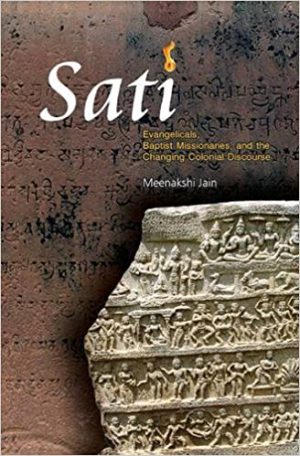 Aryan Books International, अध्यात्म की अन्य पुस्तकें, इतिहास
Aryan Books International, अध्यात्म की अन्य पुस्तकें, इतिहासSati: Evangelicals, Baptist Missionaries, and the Changing Colonial Discourse
Meenakshi is a meticulous professional historian, she quotes all the relevant sources, with descriptions of Sati from the ancient through the medieval to the modern period. She adds the full text of the relevant British and Republican laws and of Lord Wiliam Bentinck’s Minute on Sati (1829), that led to the prohibition on Sati. This book makes the whole array of primary sources readily accessible, so from now on, it will be an indispensible reference for all debates on Sati.
SKU: n/a -
Aryan Books International, इतिहास
THE BATTLE FOR RAMA: CASE OF THE TEMPLE AT AYODHYA
For over two decades, a handful of Left historians have strenuously endeavoured to stymie the Ramjanmabhumi movement. From questioning the antiquity of Rama worship and the identity of ancient Ayodhya, they have also challenged the widely held belief that Babri Masjid was built on the site of the Janmabhumi temple. Scholars have, however, traced the antiquity of the Rama Katha as far back as sixth-fifth century bce, when ancient ballads (akhyanas) transmitted Rama?s story orally. Valmiki?s Ramayana itself has been dated to the fourth-third century bce. Over the centuries, Rama?s story has been re-told in many vernaculars of the country. Rama is the exemplar of moral values for Hindu society and epitomises its aspirations of artha, kama, and above all, dharma. The proceedings of the Allahabad High Court have exposed the vulnerabilities of Left historians. They could proffer no evidence of continued Muslim presence at Babri Masjid, while the unwavering commitment of Hindu devotees to the site has been attested by several sources. Babri Masjid was not mentioned in the revenue records of the Nawabi and British periods, nor was any Waqf ever created for its upkeep. No Muslim filed an FIR or complained of dispossession or obstruction in his alleged use of the Masjid when the image of Sri Rama was placed under the central dome on 23rd December 1949. The Sunni Central Waqf Board entered litigation on 18th December 1961, just five days before the twelfth anniversary of the placement of the image in the Masjid, on which date any claim would have become time-barred. The Board did not file a suit for possession; instead it sought a declaration on the status of the property. Further, excavations of the ASI revealed uninterrupted occupation of the site since the 13th century bce. They also exposed remnants of the temple on which Babri Masjid was erected. The assertions of Left historians on Babri Masjid have all been found to be erroneous; yet there has been no public retraction. Indeed, they continue to peddle their discredited theories despite the mounting evidence against them.
SKU: n/a -
Aryan Books International, English Books, Suggested Books, इतिहास
Vasudeva Krishna and Mathura
This work examines the antiquity of image worship in India. Its main focus is the Bhagavata religion that evolved around Vasudeva Krishna of the Vrishni clan. The earliest literary reference to Vasudeva was by the grammarian Panini (6th century bce), and the earliest surviving epigraphic reference was the Heliodorus pillar inscription (2nd century bce). At Mathura, several noteworthy archaeological finds dated to the early Common Era were recovered from the site of Katra Keshavadeva.
In the medieval period, Katra Keshavadeva was subjected to repeated devastation, beginning with that by Mahmud Ghaznavi in 1071 ce. However, within a century a temple dedicated to Vishnu was built at Katra Keshavadeva. Thereafter, the story of destruction followed by construction was repeated over and over again.
In the early 17th century, the Keshavadeva temple was rebuilt by Bir Singh Deo Bundela. In 1670, the Mughal emperor, Aurangzeb ordered its destruction. An Idgah was built at the site.
Later developments at Katra Keshavadeva were recorded in the judicial records of colonial India. In 1815, Katra Keshavadeva was sold by auction to Raja Patnimal of Banaras, as was duly recorded in revenue and municipal records.
On 8th February 1944, the heirs of Raja Patnimal sold Katra Keshavadeva to Seth Jugal Kishore Birla, who created a trust for the construction of a temple for Shree Krishna. In a surprising development, on 12th October 1968, approximately two bighas of Katra Keshavadeva were handed over to Trust Masjid Idgah.
Many documents pertaining to events at Katra Keshavadeva after 1815 are perhaps being presented to the general reader for the first time. The documents attest to the dogged Hindu commitment to the site.
SKU: n/a

